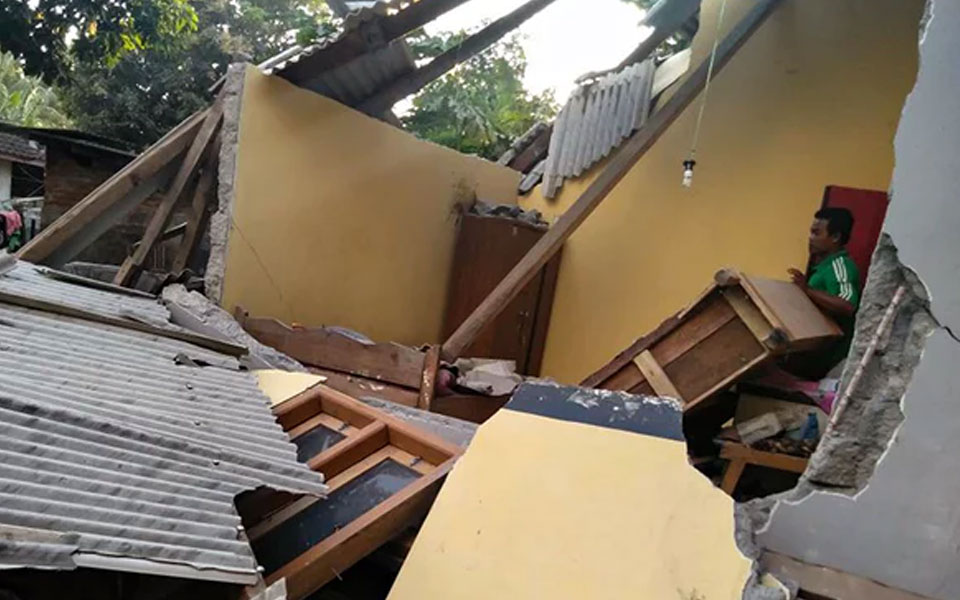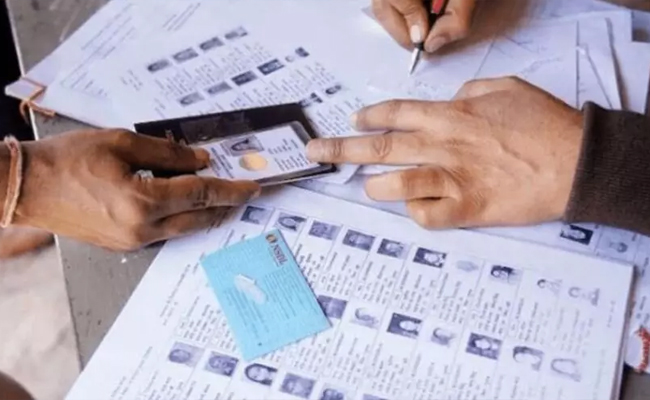Jakarta, July 29 : At least 13 people were killed and dozens injured while several buildings have collapsed after a magnitude-6.4 earthquake struck the Indonesian tourist island of Lombok on Sunday morning, officials said.
The quake struck at 6.47 a.m. at a depth of 7 km. Its epicentre was located 50 km north-east of the city of Mataram on the island of Lombok, which has a population of 319,000, the Guardian reported.
The tremors have also affected the neighbouring islands of Sumbawa and Bali.
Tourists near Senggigi, gateway to the popular Gili Islands resorts, reported strong aftershocks.
"We jumped out of our beds to avoid anything falling," said a tourist who was woken by the quake.
The Meteorology, Climatology and Geophysics Agency (BMKG) reported that in the four hours after the quake, the islands experienced 66 aftershocks and the earthquake was also felt in the neighbouring Bali.
The agency confirmed the casualties and said 40 others were injured. Dozens of buildings have been damaged.
Dwikorita Karnawati, head of the Meteorology, Climatology and Geophysics Agency, issued a statement urging the people to remain alert, given the intensity of the aftershocks, with the strongest so far recorded reaching a magnitude of 5.7.
Lombok Red Cross chief Aulia Arriani told Efe news agency that people were afraid and staying outside buildings, adding that the organisation would supply blankets, tarpaulins, sleeping bags and food packets to the affected families.
Lombok, which is about 100 km east of Bali, is a popular tourist destination, although most resorts have not reported any damage as they are located on the south and west of the island.
Indonesia sits on the Pacific Ring of Fire, a zone of high seismic and volcanic activity, that experiences around 7,000 tremors mostly of moderate intensity every year.
In 2004, a huge magnitude-9.3 earthquake under the sea triggered a tsunami which killed 168,000 people in Indonesia, and a further 50,000 people in various countries around the Indian Ocean.
Let the Truth be known. If you read VB and like VB, please be a VB Supporter and Help us deliver the Truth to one and all.
New Delhi (PTI): Congress leader P Chidambaram has slammed the "increasing practice" of the government using Hindi words in the titles of the bills and said the change is an "affront" to the non-Hindi-speaking people.
Chidambaram said the non-Hindi-speaking people cannot identify a Bill/Act with titles that are in Hindi words written in English letters, and they cannot pronounce them.
ALSO READ: EC publishes list of voters deleted from draft electoral rolls in Bengal under SIR 2026
"I am opposed to the increasing practice of the government using Hindi words written in English letters in the title of the Bills to be introduced in Parliament," the former Union minister said late Monday night.
Hitherto, the practice was to write the title of the Bill in English words in the English version and in Hindi words in the Hindi version of the Bill, Chidambaram said.
"When no one pointed out any difficulty in the 75 year practice, why should government make a change?" he said.
"This change is an affront to non-Hindi speaking people and to States that have an official language other than Hindi," the Congress leader said.
Successive governments have reiterated the promise that English will remain an Associate Official Language, Chidambaram said.
"I fear that promise is in danger of being broken," the Congress MP said.





